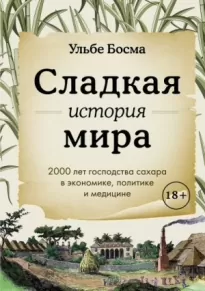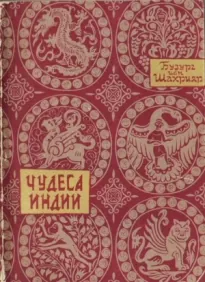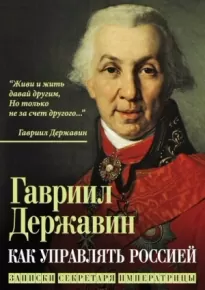Сладкая история мира. 2000 лет господства сахара в экономике, политике и медицине

- Автор: Ульбе Босма
- Жанр: Научная литература / Исторические приключения / История: прочее
Читать книгу "Сладкая история мира. 2000 лет господства сахара в экономике, политике и медицине"
8. Мировой сахар и национальное самосознание
1 Hugh Thomas, Cuba; or, the Pursuit of Freedom (London: Eyre and Spottiswoode, 1971), 100.
2 Anthony Trollope, West Indies and the Spanish Main (London: Chapman and Hall, 1867), 131.
3 J.D.B.De Bow, «The Late Cuba Expedition,» DeBow’s Review: Agricultural, Commercial, Industrial Progress and Resources 9, no. 2 (1850): 173.
4 New York Times, August 24, 1860.
5 Leslie Bethell, «The Mixed Commissions for the Suppression of the Transatlantic Slave Trade in the Nineteenth Century,» Journal of African History 7, no. 1 (1966): 92.
6 Joan Casanovas, «Slavery, the Labour Movement and Spanish Colonialism in Cuba, 1850–1890,» International Review of Social History 40, no. 3 (1995): 377–378. See Rebecca J. Scott, «Gradual Abolition and the Dynamics of Slave Emancipation in Cuba, 1868–86,» Hispanic American Historical Review 63, no. 3 (1983): 449–477.
7 David Turnbull, Travel in the West Cuba: With Notices of Porto Rico, and the Slave Trade (London: Longman, Orme, Brown, Green, and Longmans, 1840), 261.
8 Francisco de Arango y Parreño, Obras, vol. 2 (Havana: Impr. Enc. Rayados y Efectos de Escritorio, 1889), 649–658; David Murray, «The Slave Trade, Slavery and Cuban Independence,» Slavery&Abolition 20, no. 3 (1999): 121.
9 Lilia Moritz Schwarcz, The Spectacle of the Races: Scientists, Institutions, and the Race Question in Brazil, 1870–1930 (New York: Hill and Wang, 1999), 128.
10 Gilberto Freyre, The Mansions and the Shanties (Sobrados e Mucambos): The Making of Modern Brazil (New York: A.A.Knopf, 1968), 388–389.
11 Gilberto Freyre, New World in the Tropics: The Culture of Modern Brazil (New York: Alfred A.Knopf, 1959), 128–131.
12 Schwarcz, The Spectacle of the Races, 10.
13 Alejandro de la Fuente, «Race and Inequality in Cuba, 1899–1981,» Journal of Contemporary History 30, no. 1 (1995): 135.
14 April J.Mayes, The Mulatto Republic: Class, Race, and Dominican National Identity (Gainesville: University Press of Florida, 2015), 115; Edward Paulino, Dividing Hispaniola: The Dominican Republic’s Border Campaign against Haiti, 1930–1961 (Pittsburgh: Pittsburgh University Press, 2016), 150, 159.
15 Mayes, The Mulatto Republic, 44, 80.
16 Aarti S.Madan, «Sarmiento the Geographer: Unearthing the Literary in Facundo,» Modern Language Notes 126, no. 2 (2011): 266.
17 J.H.Galloway, The Sugar Cane Industry: An Historical Geography from Its Origins to 1914 (Cambridge: Cambridge University Press, 1989), 187–188.
18 Donna J.Guy, «Tucuman Sugar Politics and the Generation of Eighty,» The Americas 32, no. 4 (1976): 574; Henry St John Wileman, The Growth and Manufacture of Cane Sugar in the Argentine Republic (London: Henry Good and Son, 1884), 12.
19 Patricia Juarez-Dappe, «Cañeros and Colonos: Cane Planters in Tucumán, 1876–1895,» Journal of Latin American Studies 38, no. 1 (2006): 132–133; Daniel J. Greenberg, «Sugar Depression and Agrarian Revolt: The Argentine Radical Party and the Tucumán Cañeros’ Strike of 1927,» Hispanic American Historical Review 67, no. 2 (1987): 310–311; Oscar Chamosa, The Argentine Folklore Movement: Sugar Elites, Criollo Workers, and the Politics of Cultural Nationalism, 1900–1955 (Tucson: University of Arizona Press, 2010), 79–80, 82–83; Adrian Graves, Cane and Labour: The Political Economy of Queensland Sugar Industry, 1862–1906 (Edinburgh: Edinburgh University Press, 1993), 26, 33, 77–78, 89, 126, 248.
20 Maria Elena Indelicato, «Beyond Whiteness: Violence and Belonging in the Borderlands of North Queensland,» Postcolonial Studies: Culture, Politics, Economy 23, no. 1 (2020): 104; N.O.P.Pyke, «An Outline History of Italian Immigration into Australia,» Australian Quarterly 20, no. 3 (1948): 108.
21 Tadeusz Z.Gasinski, «Polish Contract Labor in Hawaii, 1896–1899,» Polish American Studies 39, no. 1 (1982): 20–22; Edward D.Beechert, Working in Hawaii: A Labor History (Honolulu: University of Hawaii Press, 1985), 86–87, 119, 124–139.
22 Wayne Patterson, «Upward Social Mobility of the Koreans in Hawaii,» Korean Studies 3 (1979): 82, 89.
23 Sven Beckert, Empire of Cotton: A Global History (New York: Alfred A. Knopf, 2014), 287.
24 Joseph L.Love, «Political Participation in Brazil, 1881–1969,» Luso-Brazilian Review 7, no. 2 (1970): 7; Inés Roldán de Montaud, «Política y elecciones en Cuba durante la restauración,» Revista de Estudios Politicos, no. 104 (1999): 275.
25 Scott, Degrees of Freedom: Louisiana and Cuba after Slavery (Cambridge, MA: Harvard University Press, 2008), 70; Rick Halpern, «Solving the ‘Labour Problem’: Race, Work and the State in the Sugar Industries of Louisiana and Natal, 1870–1910,» Journal of Southern African Studies 30, no. 1 (2004): 22.
26 J.C.Rodrigue, «‘The Great Law of Demand and Supply’: The Contest over Wages in Louisiana’s Sugar Region, 1870–1880,» Agricultural History 72, no. 2 (1998): 160.
27 Paolo Giordano, «Italian Immigration in the State of Louisiana: Its Causes, Effects, and Results,» Italian Americana 5, no. 2 (1979): 165; J.P.Reidy, «Mules and Machines and Men: Field Labor on Louisiana Sugar Plantations, 1887–1915,» Agricultural History 72, no. 2 (1998): 184.
28 Rebecca J.Scott, Degrees of Freedom, 85, 93, 189–99; Halpern, «Solving the ‘Labour Problem,’» 23.
29 J.Vincenza Scarpaci, «Labor for Louisiana’s Sugar Cane Fields: An Experiment in Immigrant Recruitment,» Italian Americana 7, no. 1 (1981): 20, 27, 33–34; Giordano, «Italian Immigration,» 165; Reidy, «Mules and Machines,» 188.
30 Mark D.Schmitz, «Postbellum Developments in the Louisiana Cane Sugar Industry,» Business and Economic History 5 (1976): 89.
31 Anonymous, «Salutatory,» Louisiana Planter and Sugar Manufacturer, 1888, 1.
32 Mark Schmitz, «The Transformation of the Southern Cane Sugar Sector: 1860–1930,» Agricultural History 53, no. 1 (1979): 274, 277; Anonymous, «Leon Godchaux,» Louisiana Planter and Sugar Manufacturer, 1899, 305–306.
33 Giordano, «Italian Immigration,» 168–172.
34 Reidy, «Mules and Machines,» 189–190, 196; William C. Stubbs, «Sugar,» Publications of the American Economic Association 5, no. 1 (1904): 80; J. Carlyle Sitterson, Sugar Country: The Cane Sugar Industry in the South 1753–1950 (Lexington: University of Kentucky Press, 1953), 277, 394.
35 См.: John Wesley Coulter, «The Oahu Sugar Cane Plantation, Waipahu,» Economic Geography 9, no. 1 (1933): 60–71.
36 Эта мысль перекликается с источником: Ann Laura Stoler, «Sexual Affronts and Racial Frontiers: European Identities and the Cultural Politics of Exclusion in Colonial Southeast Asia,» in Tensions of Empire: Colonial Cultures in a Bourgeois World, ed. Frederick Cooper and Ann Laura Stoler (Berkeley: University of California Press, 1997), 226.
37 A.Featherman, «Our Position and That of Our Enemies,» DeBow’s Review: Agricultural, Commercial, Industrial Progress and Resources 31, no. 1 (1861): 31.
38 Featherman, «Our Position,» 27.
39 В этом отношении см.: Ann Stoler, «Rethinking Colonial Categories: European Communities and the Boundaries of Rule,» Comparative Studies in Society and History 31, no. 1 (1989): 134–161.
40 J.A.Delle, «The Material and Cognitive Dimensions of Creolization in Nineteenth-Century Jamaica,» Historical Archeology 34 (2000): 57.
41 Lawrence N.Powell, The Accidental City: Improvising New Orleans (Cambridge, MA: Harvard University Press, 2013), 287–290.
42 Henry Koster, Travels in Brazil (London: Printed for Longman, Hurst, Rees, Orme, and Brown, 1816), 393–394; Elena Padilla Seda, «Nocorá: The Subculture of Workers on a Government-Owned Sugar Plantation,» in The People of Puerto Rico: A Study in Social Anthropology, ed. Julian H. Steward (Urbana: University of Illinois Press, 1956), 274–275.
43 Colleen A.Vasconcellos, Slavery, Childhood, and Abolition in Jamaica, 1788–1838 (Athens: University of Georgia Press, 2015), 43.
44 Bryan Edwards, The History, Civil and Commercial, of the British Colonies in the West Indies…, vol. 2 (London: Printed for John Stockdale, 1793), 16–17.
45 Freyre, Mansions, 177.
46 Frederick Law Olmsted, A Journey in the Seaboard Slave States: With Remarks on Their Economy (New York: Dix and Edwards, 1856), 594, 635.
47 Edwin Farnsworth Atkins, Sixty Years in Cuba: Reminiscences… (Cambridge: Riverside Press, 1926), 46; Antonio Benítez Rojo, «Power / Sugar / Literature: Toward a Reinterpretation of Cubanness,» Cuban Studies 16 (1986): 19.
48 John Mawe, Travels in the Interior of Brazil: Particularly in the Gold and Diamond Districts of that Country… (London: Longman, Hurst, Rees, Orme, and Brown, 1812), 281.
49 Featherman, «Our Position,» 27.
50 George Washington Cable, Madame Delphine: A Novelette and Other Tales (London: Frederick Warne, 1881); Alice H. Petry, A Genius in His Way: The Art of Cable’s Old Creole Days (Rutherford, NJ: Fairleigh Dickinson University Press, 1988), 32.
51 См.: Gilberto Freyre, The Masters and the Slaves (Casa-Grande and Senzala): A Study in the Development of Brazilian Civilization, trans. Samuel Putnam (New York: Knopf, 1946).
52 Freyre, New World, 92; Freyre, Mansions, 431. См. также: José Vasconcelos, La raza cósmica: Misión de la raza iberoamericana, Argentina y Brasil (México: Espasa-Calpe Mexicana, 1948).
53 Gilberto Freyre, Order and Progress: Brazil from Monarchy to Republic (New York: Knopf, 1970), xix.
54 April Merleaux, Sugar and Civilization: American Empire and the Cultural Politics of Sweetness (Chapel Hill: University of North Carolina Press, 2015), 108–115.
55 Edward E.Weber, «Sugar Industry,» in Industrialization of Latin America, ed. L.J.Hughlett (New York: McGraw-Hill, 1946), 398; Merleaux, Sugar and Civilization, 114–119.
56 R.B.Ogendo and J.C.A.Obiero, «The East African Sugar Industry,» GeoJournal: An International Journal on Human Geography and Environmental Sciences 2, no. 4 (1978): 343, 347.
57 Ulbe Bosma, The Sugar Plantation in India and Indonesia: Industrial Production, 1770–2010 (Cambridge: Cambridge University Press, 2013), 197, 210.
58 Manuel Correia de Andrade, The Land and People of Northeast Brazil (Albuquerque: University of New Mexico Press, 1980), 81; Weber, «Sugar Industry,» 393–394.
59 J.C.K., «The Sugar-Palm of East Indies,» Journal of the Royal Society of Arts 59, no. 3048 (1911): 567–569; Charles Robequain, «Le sucre de palme au Cambodge,» Annales de Géographie 58, no. 310 (1949): 189; D.F.Liedermoij, «De Nijverheid op Celebes,» Tijdschrift voor Nederlandsch Indië 16, 2, no. 12 (1854): 360. См. также: Harold E.Annett, The Date Sugar Industry in Bengal: An Investigation into Its Chemistry and Agriculture (Calcutta: Thacker Spink, 1913).
60 Roger Owen, «The Study of Middle Eastern Industrial History: Notes on the Interrelationship between Factories and Small-Scale Manufacturing with Special References to Lebanese Silk and Egyptian Sugar, 1900–1930,» International Journal of Middle East Studies 16, no. 4 (1984): 480–481.
61 Bosma, The Sugar Plantation, 191.
62 Mildred Maddocks and Harvey Washington Wiley, The Pure Food Cook Book: The Good Housekeeping Recipes, Just How to Buy – Just How to Cook (New York: Hearst’s International Library, 1914), 3.
63 Merleaux, Sugar and Civilization, 133.
64 Weber, «Sugar Industry,» 410–417.
65 Leigh Binford, «Peasants and Petty Capitalists in Southern Oaxacan Sugar Cane Production and Processing, 1930–1980,» Journal of Latin American Studies 24, no. 1 (1992): 51–54; Manuel Moreno Fraginals, El ingenio: El complejo economico social cubano del azucar (Havana: Comisión Nacional Cubana de la UNESCO, 1964), 82.
66 John Richard Heath, «Peasants or Proletarians: Rural Labour in a Brazilian Plantation Economy,» Journal of Development Studies 17, no. 4 (1981): 278; Andrade, Land and People, 86.
67 Gonzalo Rodriguez et al., Panela Production as a Strategy for Diversifying Incomes in Rural Area of Latin America (Rome: United Nations Food and Agriculture Organization, 2007), xvi, 10, 17.
68 Bosma, The Sugar Plantation, 86.
69 Bosma, The Sugar Plantation, 134–135; Leone Levi, On the Sugar Trade and Sugar Duties: A Lecture Delivered at King’s College, London, Feb. 29, 1864 (London: Effingham Wilson, 1864), 19–20.
70 Цит. по: Bosma, The Sugar Plantation, 135.
71 Bosma, The Sugar Plantation, 136–137.
72 Alexander Burnes, Travels into Bokhara: Being the Account of a Journey from India to Cabool, Tartary and Persia… in the Years 1831, 1832, and 1833, 3 vols. (London: J. Murray, 1834), 1:44.
73 James Mylne, «Experiences of an European Zamindar (Landholder) in Behar,» Journal of the Society of Arts 30, no. 1538 (1882): 704.
74 Сведения, представленные в параграфе, приведены на основе источника: Bosma, The Sugar Plantation, 138–142, и прил. I, 271.
75 J.W.Davidson, The Island of Formosa: Historical View from 1430 to 1900… (New York: Paragon Book Gallery, 1903), 450, 457. Очерк Уикхема Майерса приводится в источнике: Davidson, The Island of Formosa, 449–451.
76 Mylne, «Experiences of an European Zamindar,» 706.
77 Bosma, The Sugar Plantation, 146, 150, 205.
78 Bosma, The Sugar Plantation, 206.
79 Bosma, The Sugar Plantation, 206.
80 Bosma, The Sugar Plantation, 207–208.
81 Krishna Kumar Birla, Brushes with History (New Delhi: Penguin India, 2009), 594–595.
82 Bosma, The Sugar Plantation, 241–242.
83 «Background Study: Pakistan,» Proceedings of Fiji / FAO Asia Pacific Sugar Conference, Fiji, 29–31 October 1997, https://www.fao.org/3/X0513E/x0513e23.htm; M.S.Rahman, S.Khatun, and M.K.Rahman, «Sugarcane and Sugar Industry in Bangladesh: An Overview,» Sugar Tech 18, no. 6 (2016): 629.
84 Aashna Ahuja, «15 Jaggery (Gur) Benefits: Ever Wondered Why Our Elders End a Meal with Gur?» NDTV Food, August 24, 2018, https://food.ndtv.com/health/15-jaggery-benefits-ever-wondered-why-our-elders-end-a-meal-with-gur-1270883.





